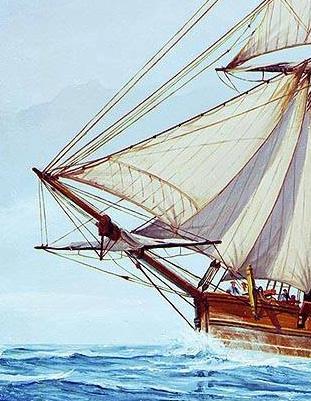
2 minute read
Continental military takes Nassau
On this 3 March 1776, forces of the Continental Navy and Continental Marines of the American Colonies conduct their first ever amphibious landing at New Providence, Bahamas, a part of the greater Battle of Nassau.

Advertisement
When the English Colonies of North America revolted against the Crown and declared Revolution, the colonies were severely lacking in a number of fields. From vital supplies like food, uniforms, munitions, and firearms, to aspects like an active navy (all naval vessels in America would have been under the control of the English Royal Navy) the burgeoning Patriot cause was seriously lacking. In particular the Continental Army was in desperate need of gunpowder, and when General George Washington could not acquire the necessary amount by conventional means he looked to the newly formed Continental Navy and Corps of Marines.
It had been discovered that the British controlled Bahamian island of New Providence, where the city of Nassau was situated, had a supply of gunpowder sufficient to meet Washington’s needs. The Continental congress ordered a fleet under command of Commodore Esek Hopkins to sail to New Providence and liberate the gunpowder from Fort Montague, one of two redoubts defending the city of Nassau. On the 3rd of March, 1776, Marines conducted the first ever amphibious landing in United States history under command of Captain Samuel Nicholas,
landing on the shores of what infamous pirates such as Edward “Blackbeard” Teach/ Thatch and James “Calico Jack” Rackham called home some 57 years prior.
Focused mainly at capturing Fort Montague, the Marines were met with little resistance, and captured the fort with ease. Prior to the battle, the island’s forces had moved the gunpowder to the city’s main fortification of Fort Nassau. The Marines planned to capture the fort the next day, and when the fort surrendered it was discovered that the gunpowder had once again been spirited away, this time by ship.


While the main objective of capturing gunpowder was unsuccessful, the Continental Navy and Marine forces were able to plunder the island of a number of valuable cannon and other ordinance that would nonetheless be helpful to the patriot cause. The Raid of Nassau would also be an important point of both United States Navy and Marine Corps lore, proving their efficiency and ability. The island that was once called home by the “Republic of Pirates” would be the first foreign soil where a Patriot Flag would be raised.





